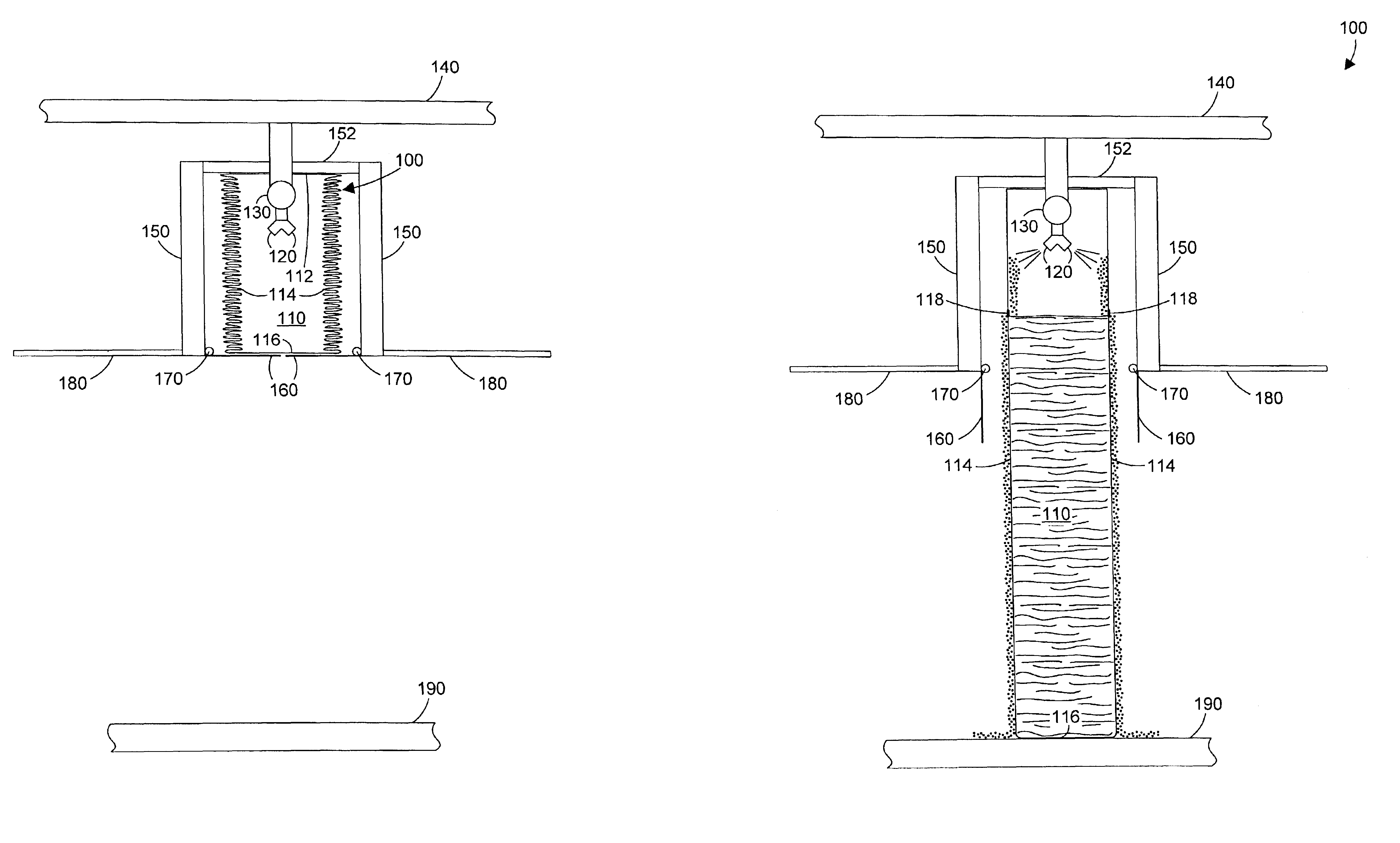Fire protection apparatus and method
- Summary
- Abstract
- Description
- Claims
- Application Information
AI Technical Summary
Benefits of technology
Problems solved by technology
Method used
Image
Examples
Embodiment Construction
[0024]The preferred embodiments provide a fire protection apparatus that substantially fills with a non-flammable liquid (such as water) and thereby provides a barrier to the spread of fire and smoke. When the term “water” is used herein, it is used as one specific non-flammable liquid that may be used within the scope of the preferred embodiments, which expressly extend to any non-flammable liquid. In one specific embodiment, the apparatus includes a plurality of bladders that are initially in a substantially collapsed position, preferably in an overhead area. When a fire alarm sounds, water is directed through a manifold, which directs the water into each bladder. The weight of the water filling the bladders causes the apparatus to deploy downward until the bottom portions of the bladders contact some surface, creating a barrier that inhibits the spread of fire and smoke. In a second specific embodiment, an apparatus is placed in a stationary position, and water is then directed i...
PUM
 Login to View More
Login to View More Abstract
Description
Claims
Application Information
 Login to View More
Login to View More - R&D
- Intellectual Property
- Life Sciences
- Materials
- Tech Scout
- Unparalleled Data Quality
- Higher Quality Content
- 60% Fewer Hallucinations
Browse by: Latest US Patents, China's latest patents, Technical Efficacy Thesaurus, Application Domain, Technology Topic, Popular Technical Reports.
© 2025 PatSnap. All rights reserved.Legal|Privacy policy|Modern Slavery Act Transparency Statement|Sitemap|About US| Contact US: help@patsnap.com



